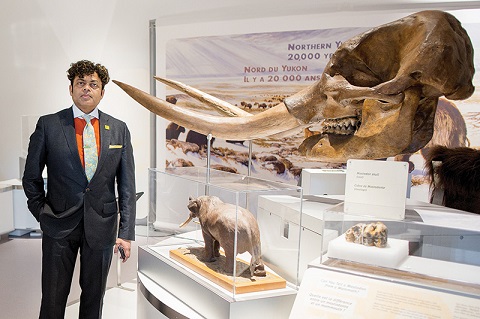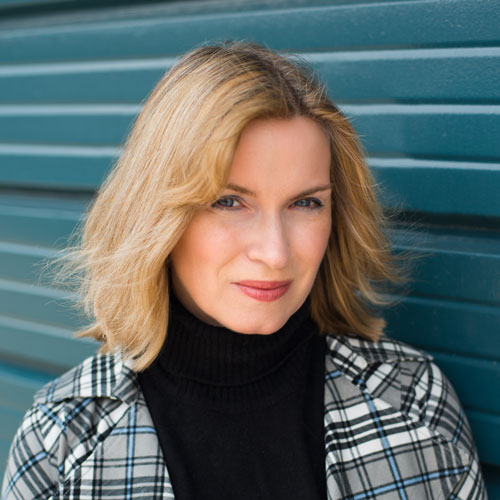Dinosaurs may be extinct, but our collective obsession with them is very much alive. Amateur paleontologists will flock to Northern Alberta’s Pipestone Creek this fall, location of the world’s densest bed of horned dinosaur bones. The occasion: the opening of the new Philip J. Currie Dinosaur Museum – a laboratory, dig site, and state-of-the-art exhibition space. Cynthia Macdonald excavates the facts with George Jacob (MMSt 1996), the museum’s founding president and CEO.
It seems Alberta is as famous for dinosaurs as it is for oil. In fact,I’ve heard several reports of pipeline workers digging up bones while on the job!
Indeed. In 2013, workers from Tourmaline Oil uncovered the massive tail fossil of a duck-billed hadrosaur, measuring about two metres, in the area near here. To prepare it for exhibiting, 11 blocks of rock weighing 20 tonnes were hauled to the Royal Tyrrell Museum in Drumheller, Alberta. The tail, on loan, will be displayed at our museum.
And what about tourists – is it true that they too can dig for bones at Pipestone Creek?
Under Alberta law, only a qualified paleontologist, such as Philip J. Currie, can apply for a dig permit. So if you want to participate in a dig here, you must do so under his supervision. But we offer bonebed tours. You can also fly in a helicopter over Pipestone Creek, with a tablet computer that zeroes in and explains what you’re seeing.
Tell me about Philip J. Currie (BSc 1972 UC), for whom the museum is named. Everyone says he’s the model – or a model, anyway – for the scientist who brings dinosaurs back to life in Jurassic Park.
He is a world-famous expert, a Canada Research Chair at the University of Alberta, who has dedicated his life to the discovery and research of paleontological heritage in Canada and well beyond. When he and his wife, palynologist Eva Koppelhus, come each summer, a lot of people want to go to the dig site with them.
Some people who do that are quite famous. Your museum’s theatre is named after Dan Aykroyd and his family, who are big supporters.
Yes, and they’ve visited the dig site. Robert F. Kennedy Jr.’s kids have come, and other celebrities. There’s a continuing fascination that everyone has with these behemoths that once roamed this part of Alberta until two catastrophic floods wiped them out.
Since receiving a degree in museum studies at U of T, you’ve devoted your life to founding museums around the world. In the computer age, why are museums still important?
Museums are the souls of civil societies. There is no substitute for seeing, touching and engaging with something that is real. But Canadians don’t invest nearly enough in museums. Around the world, there are museums on fashion, winemaking, animation, insects – even chocolate! There are so many fascinating topics that museums can focus on that could be game-changers, if Canada tapped into the talent that it has here.






